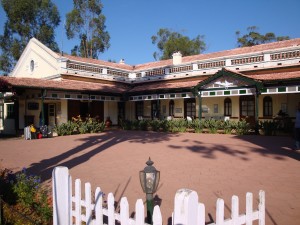Ooty
 From Nagarhole we embarked upon a 4-hour drive to Ooty, a hill station town built by the British in the 19th century. It is 2,600 metres above sea level (by contrast Ben Nevis, the highest mountain in the UK, is about 1,250 metres high.)
From Nagarhole we embarked upon a 4-hour drive to Ooty, a hill station town built by the British in the 19th century. It is 2,600 metres above sea level (by contrast Ben Nevis, the highest mountain in the UK, is about 1,250 metres high.)
Ooty is our only stop in Tamil Nadu, the second of three states we are visiting this trip. They say that the inhabitants of Tamil Nadu have three abiding passions: temples/religion (there are over 2,000 Hindu temples in the state), politics and movies. We certainly saw plenty of temples.
We drove for some time over the plains, through two more national parks, and then began our ascent – a chaotic road with 36 hairpin bends and lots of unpredictable Indian traffic!
We arrived at the Savoy Hotel in Ooty in time for a late lunch (though for a variety of reasons this didn’t actually happen.)
The Savoy is a fascinating relic of the Raj – British suburban architecture from the 19th Century, and sparse with no central heating (a “wallah” comes round and asks if you want a fire lit in your room) or air conditioning, and the sort of interior appointments that reminded me of aged aunts’ houses in the ’60s.
After the lunch that wasn’t we went round the town – it was beautifully fresh and cool. Because it was a Sunday there were hoards of people about, families enjoying the weather and visiting the Botanic Gardens, which we also walked round.
An intriguing little place, iconic of the strangeness that is post-Raj India – Hinduism, Islam and Christianity (both Catholic – Portuguese – and Anglican) all co-existing peaceably, strange throwbacks like houses and churches designed by British architects and looking somehow like the heart of the Home Counties, yet all around Indian culture (insofar as that can be thought of as an entity) and a great feeling of “Indian-ness.” Ooty is a tea-growing centre and also a big centre for education, with the best secondary school in India nearby at Lovedale.